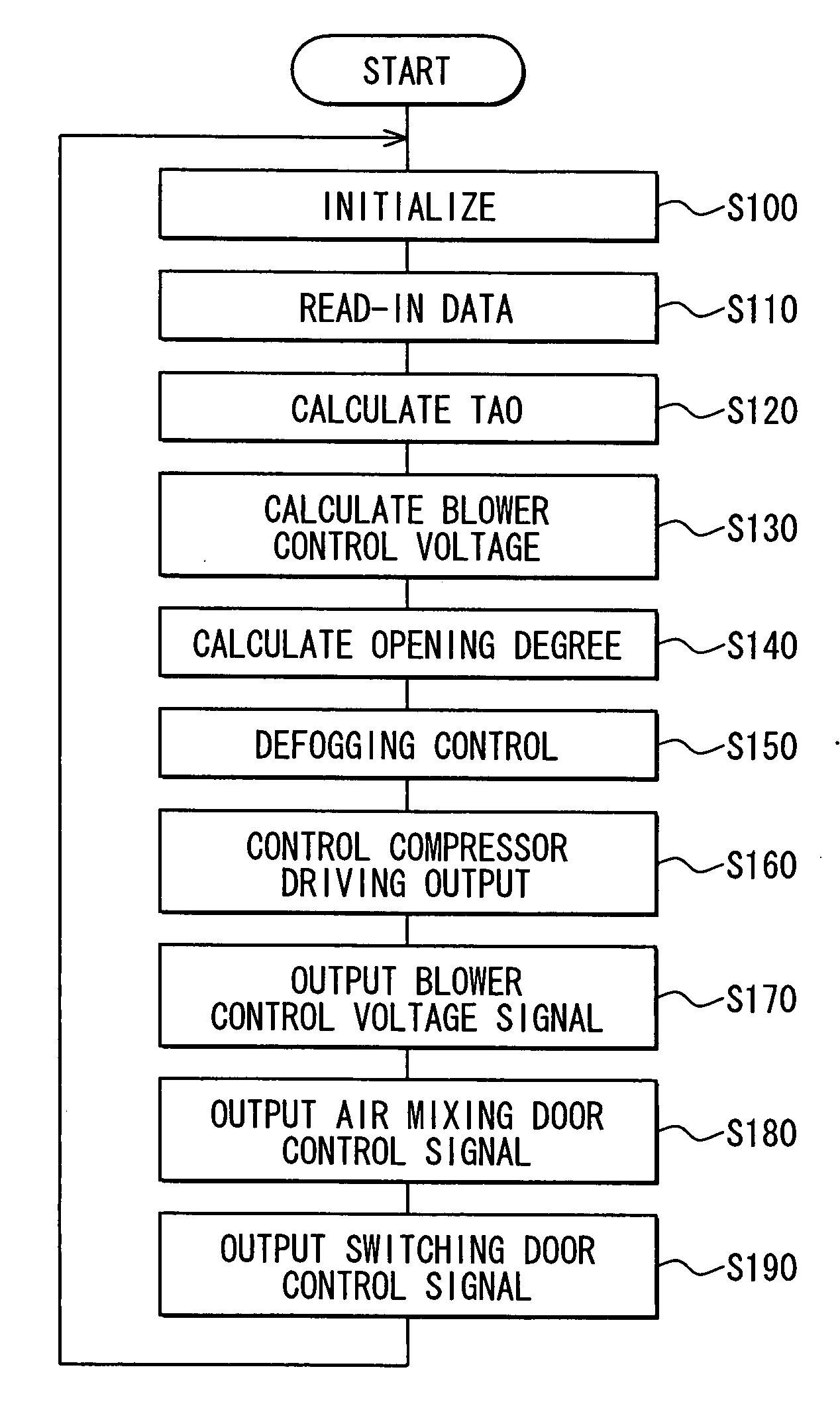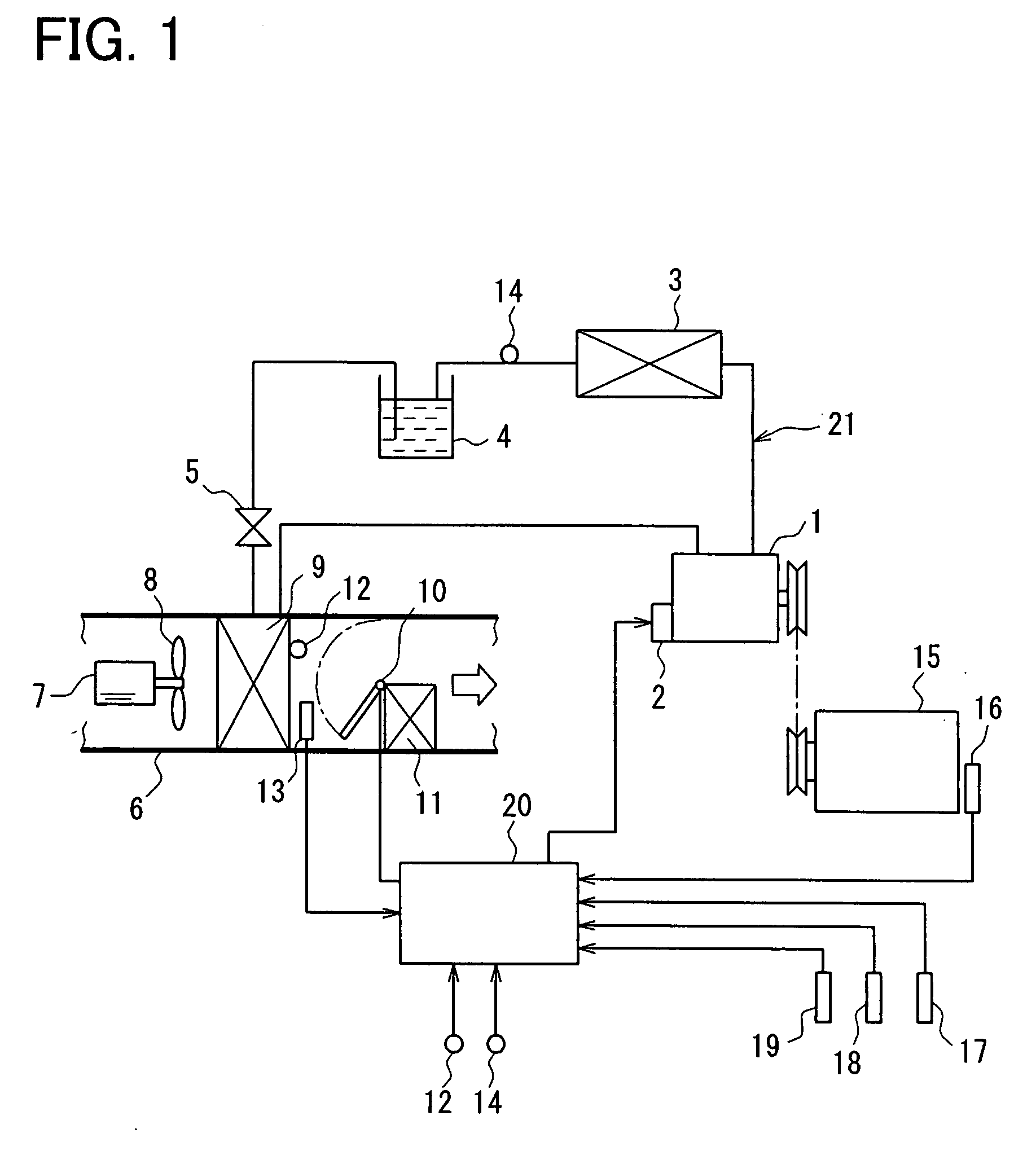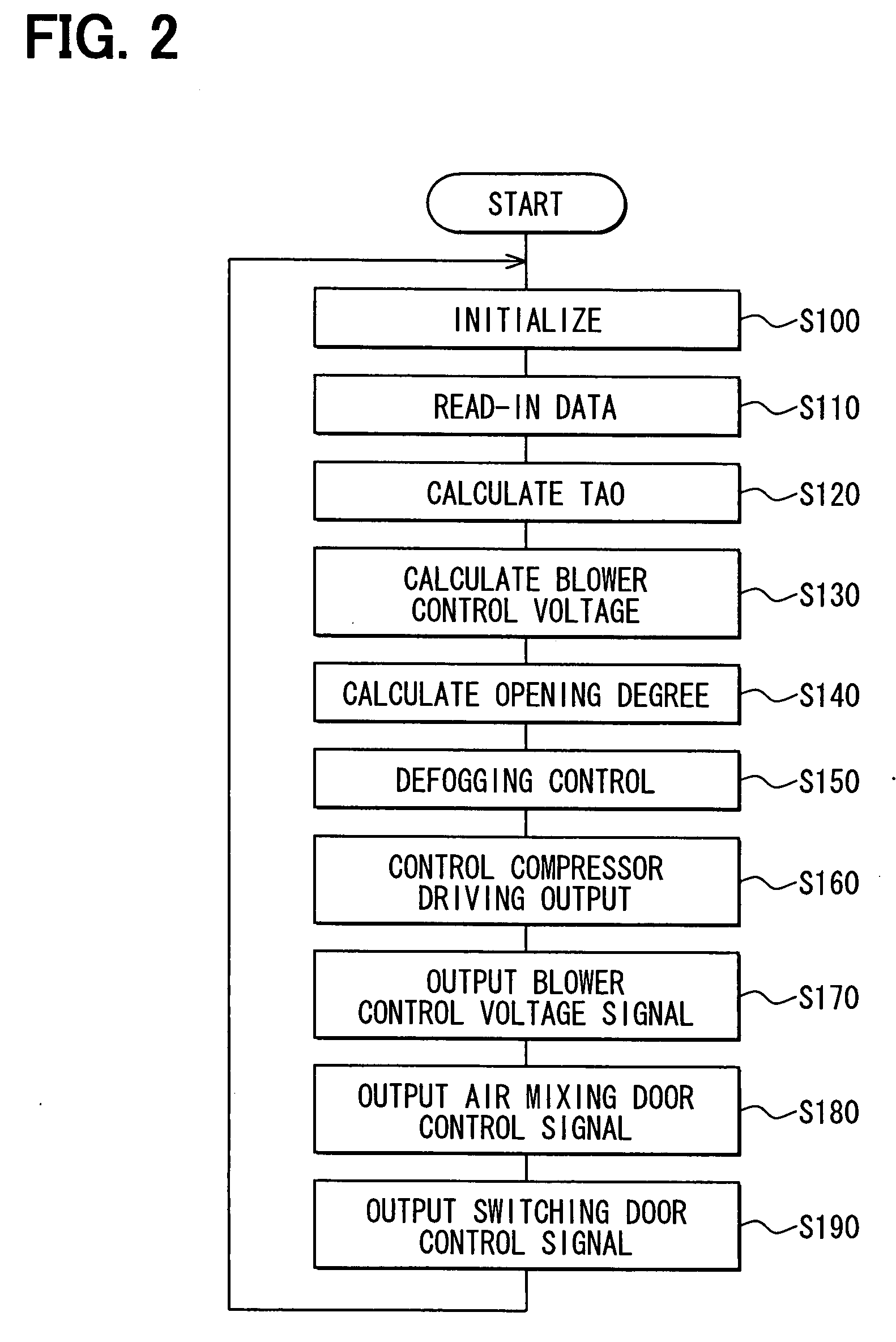Air conditioning system
a technology of air conditioning system and compressor, which is applied in the direction of refrigeration components, transportation and packaging, light and heating equipment, etc., can solve the problems of excessive control value of heat load exerted on the evaporator at the start of operation, and achieve the effect of reducing the freezing of the evaporator and maximizing the capacity of the compressor
- Summary
- Abstract
- Description
- Claims
- Application Information
AI Technical Summary
Benefits of technology
Problems solved by technology
Method used
Image
Examples
embodiments
First Embodiment
[0031]An air conditioning system for a vehicle according to a first embodiment of the present invention will be described with reference to FIGS. 1-7.
[0032]The air conditioning system has an air conditioner case 6 in which apparatuses for air-conditioning are housed, a refrigerant cycle device 21, and a control unit 20. Refrigerant for absorbing heat from blown air to cool blown air is circulated in the refrigerant cycle device 21 to flow through an evaporator 9 which is housed in the air conditioner case 6. The control unit 20 controls a driving output of a compressor 1 (which discharges refrigerant to the side of evaporator 9) by adjusting (changing) the control value of the compressor 1, to control the capability of the compressor 1.
[0033]The air conditioner case 6 can be used for a front-seat air conditioner unit and arranged in an instrument panel at the front portion of the vehicle to air-condition the front seat side of the passenger compartment. Moreover, the...
second embodiment
[0094]A second embodiment of the present invention will be described with reference to FIG. 7 which shows the subroutine of step S160 (that is, driving output step) in FIG. 2.
[0095]The control procedure of the driving output step of the compressor 1 according to the second embodiment is different from that of the first embodiment only at step S410 shown in FIG. 7. That is, the subroutine (shown in FIG. 3) of step S160 (in FIG. 2) is provided with step S410 shown in FIG. 7 instead of step S310.
[0096]In this case, at first, it is determined at step S300 whether or not the current driving of the compressor is the initial driving since the ignition switch becomes ON so that the control unit 20 is power-supplied. In the case where it is determined that the driving for this time is the initial driving, step S410 will be performed.
[0097]At step S410, the control value G2 for determining the driving output of the compressor 1 is calculated. In this case, the control value G2 is calculated b...
third embodiment
[0109]A third embodiment of the present invention will be described with reference to FIG. 8 which shows the subroutine of step S160 in FIG. 2.
[0110]In this case, steps S500, S550, S560 and S570 shown in FIG. 8 are respectively same with steps S300, S330, S340 and S350 in the subroutine shown in FIG. 3.
[0111]At first, when it is determined by the control unit 20 at step S500 that the driving of the compressor for this time is the initial driving since the ignition switch becomes ON so that the control unit 20 is power-supplied, step S510 will be performed.
[0112]At step S510, it is determined whether or not the outside-air temperature TAM detected by the outside air sensor 18 is lower than or equal to a predetermined temperature. In the case where it is determined at step S510 that the outside-air temperature (related to heat load of evaporator 9) is higher than the predetermined temperature, it is considered that the possibility for the evaporator 9 to freeze is low so that the abov...
PUM
 Login to View More
Login to View More Abstract
Description
Claims
Application Information
 Login to View More
Login to View More - R&D
- Intellectual Property
- Life Sciences
- Materials
- Tech Scout
- Unparalleled Data Quality
- Higher Quality Content
- 60% Fewer Hallucinations
Browse by: Latest US Patents, China's latest patents, Technical Efficacy Thesaurus, Application Domain, Technology Topic, Popular Technical Reports.
© 2025 PatSnap. All rights reserved.Legal|Privacy policy|Modern Slavery Act Transparency Statement|Sitemap|About US| Contact US: help@patsnap.com



